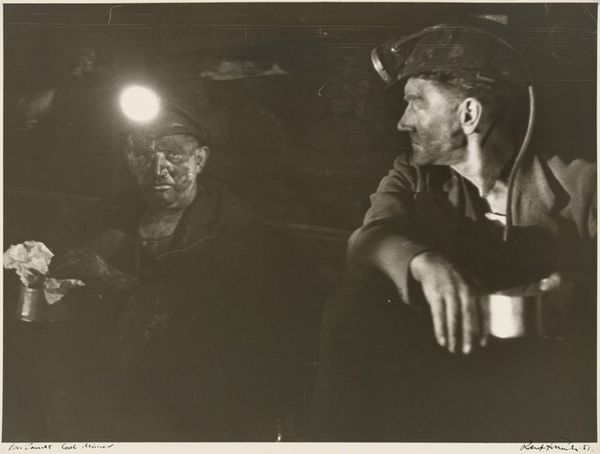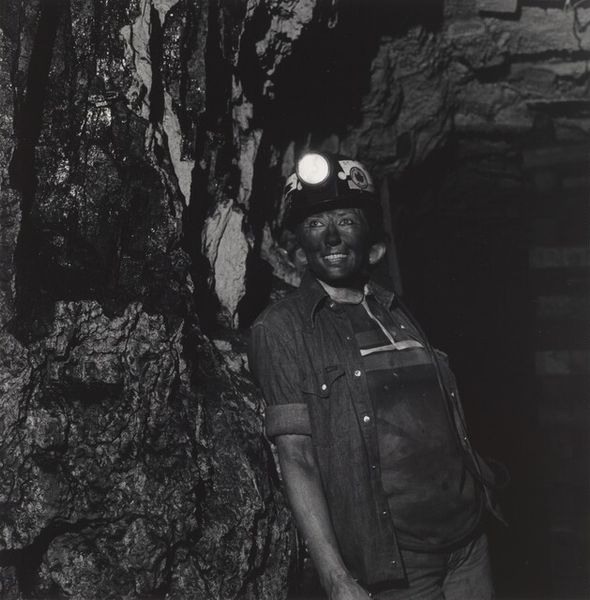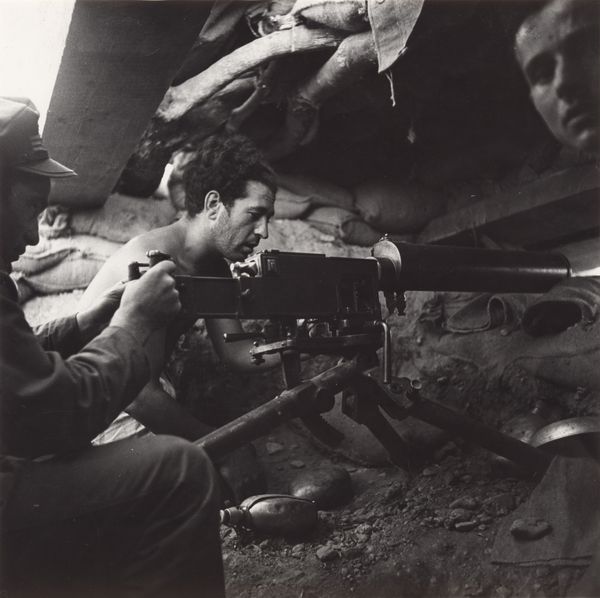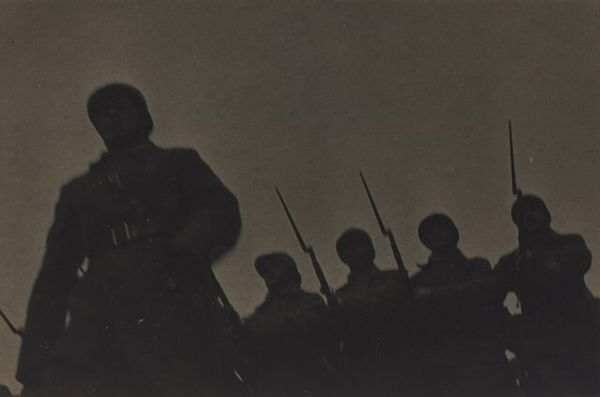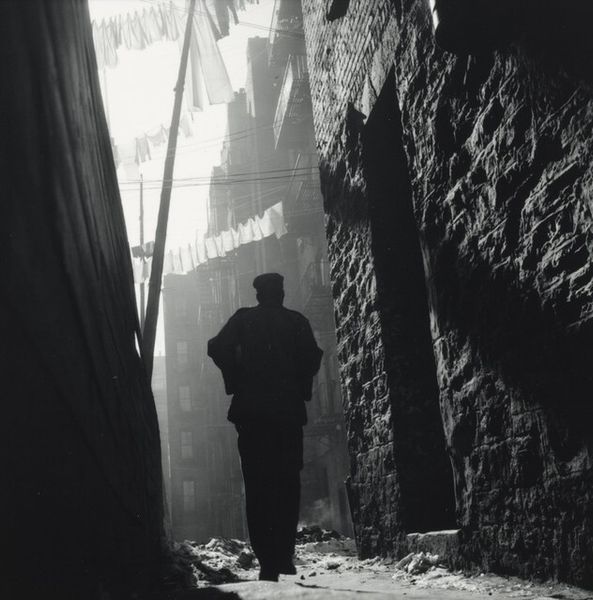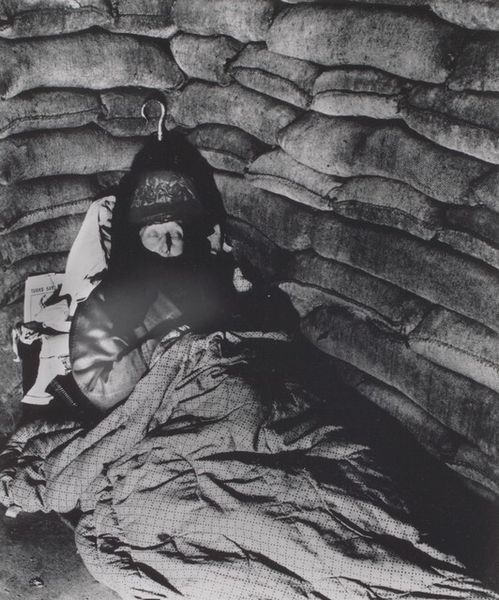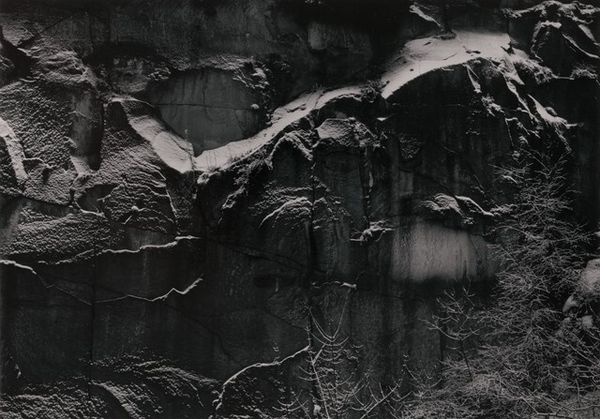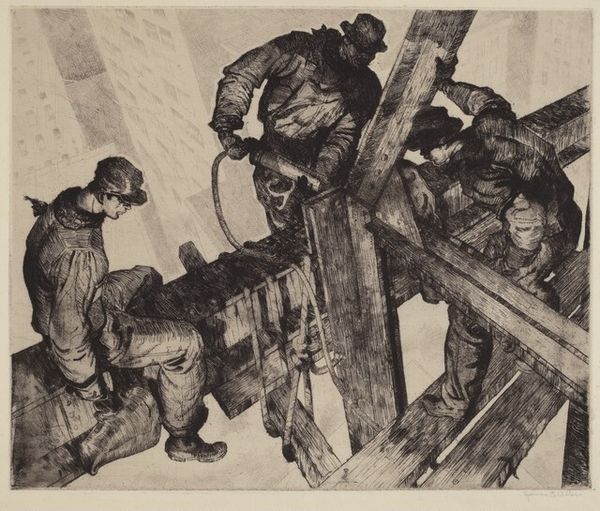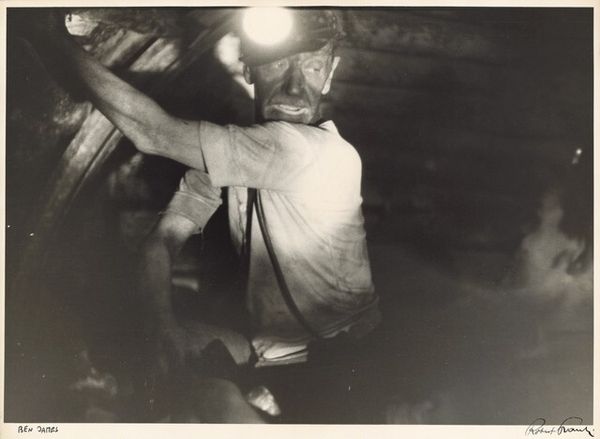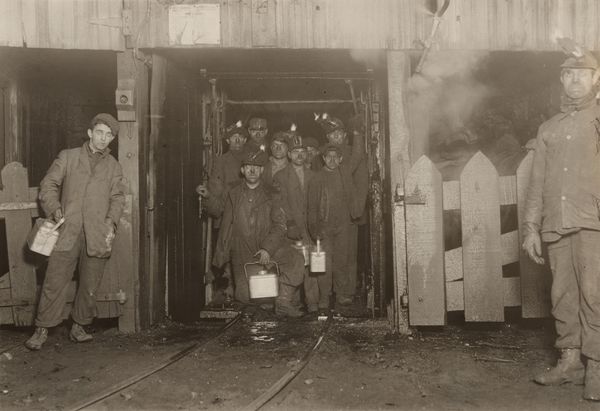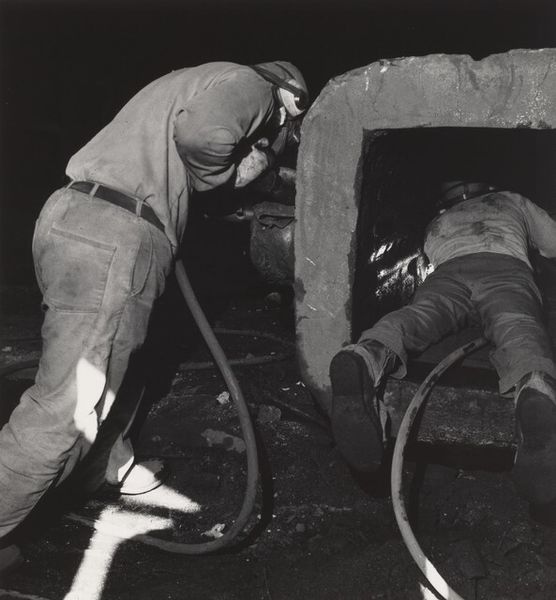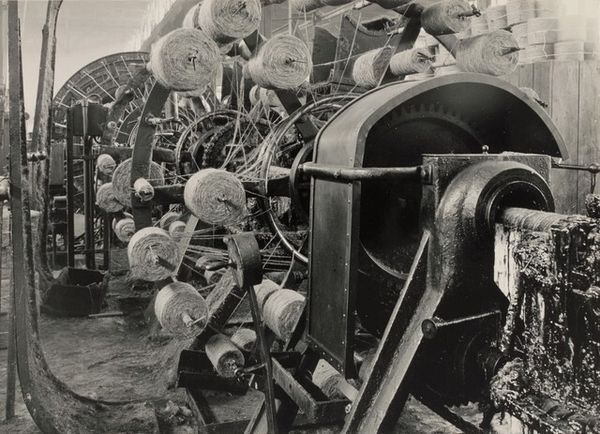
photography
#
portrait
#
dark place
#
dark clothe
#
conceptual-art
#
festival photography
#
dark hue
#
photography
#
dark-toned
#
neo-expressionism
#
dark image
#
dark colour palette
#
dark mood
#
dark vibe
#
dark
Copyright: Arsen Savadov,Fair Use
Editor: We're looking at "Donbass Chocolate," a 1997 photograph by Arsen Savadov. The striking image features a group of miners, covered in soot, in a dark underground space. Suspended amidst them is a frilly white dress. The contrast is immediately jarring. What compositional elements stand out to you? Curator: The stark juxtaposition of light and shadow certainly commands attention. Savadov’s strategic use of chiaroscuro – that intense contrast between the dress's pristine whiteness and the enveloping darkness – creates visual drama. Consider, too, the texture: the rough, grimy surfaces of the miners and the mine itself, set against the delicate, almost ephemeral quality of the dress. Editor: It's as if the dress shouldn't even be there. Does this placement serve a structural function? Curator: Indeed. The dress disrupts the visual plane, fracturing our perception of the scene. It becomes a focal point not through dominance, but through radical otherness. The eye is repeatedly drawn back to it, forcing a reconsideration of the surrounding figures and their environment. Note how the composition is anchored by the miners' gazes, all subtly directed towards the dress, thus reinforcing its pivotal role. Editor: That’s a strong interpretation! I hadn’t considered the directional gazes. Does the palette affect its interpretation? Curator: Undoubtedly. The somber, almost monochromatic palette underscores the bleakness and harsh realities of the mining environment. It amplifies the shock of the bright, pure white, lending the dress a symbolic weight. Color here operates not as mere representation, but as a carrier of meaning. Editor: I see it! So, analyzing color and composition really open up avenues to deeper interpretations. Curator: Precisely. And that's where the true power of formal analysis lies. Editor: This has really helped me to think differently about the power of composition. Thanks!
Comments
No comments
Be the first to comment and join the conversation on the ultimate creative platform.
